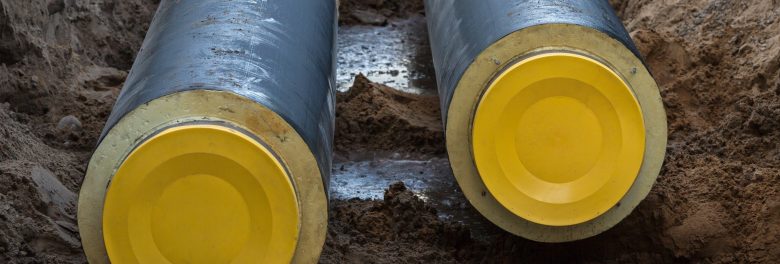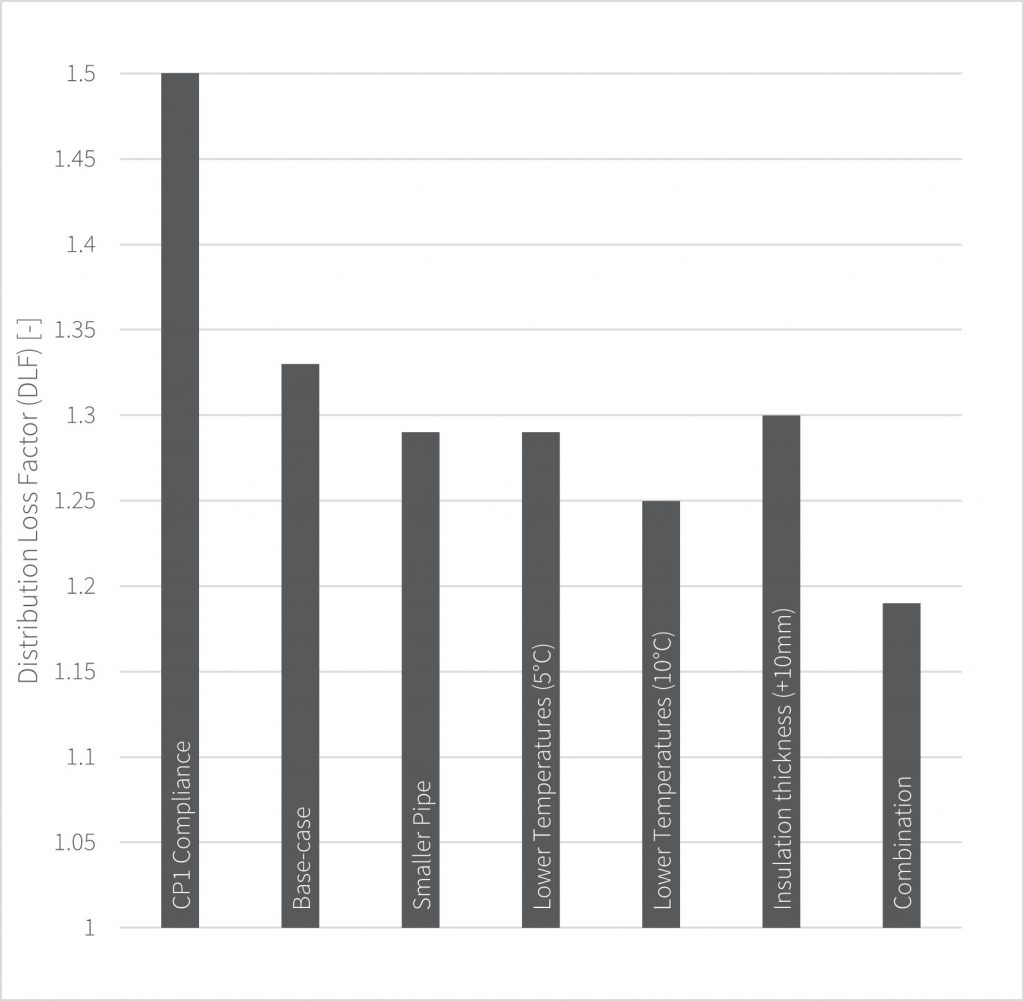
Heat losses (and their SAP counterpart – the Distribution Loss Factor – DLF) are a key aspect of achieving carbon & primary energy targets in Part L 2021, so its therefore important to understand how they can be lowered.
We have looked at the impact of several heat loss reduction measures (see Figure 1).
CP1 compliance enables use of a default DLF of 1.5, but is unlikely to be enough to meet your carbon performance targets. Enhancements, and use of a calculated DLF, will therefore be required and could include:
- Base case: based on a typical block of flats with a single riser, 8 stories, circa 10 units per floor, 50mm thick insulation, 75/45°C F/R temperatures and no thermal substation (which would have a significant impact on DLF);
- Smaller pipework: lower capex (less pipe material, insulation and chemicals), lower heat losses, potentially larger pumps needed and higher pumping costs. May be challenging to get M&E designers to deliver this without operational data;
- Marginally lower temperatures: lower heat losses, no capex impact, higher plant efficiency;
- Increased insulation: higher capex, larger corridor service zones, lower heat losses.
Naturally, a combination of the above would achieve proportionally higher savings.
There are other approaches such as increasing riser/lateral ratio which should be considered as well.
Posted on April 28th, 2022
Author: Igor Esteves
Related services: SAP (Domestic), Masterplanning & Strategy, Heat Network Performance Evaluation,
